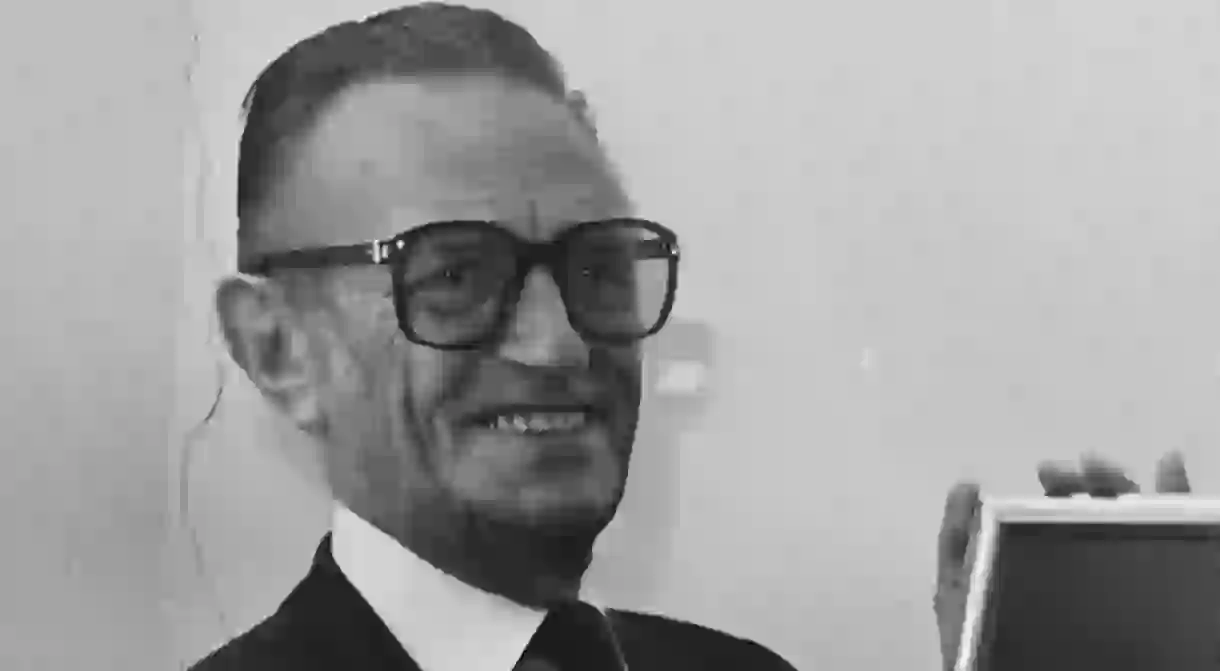Willy Vandersteen: The Belgian Comic Creator Behind Suske En Wiske

On the 15th of February, 2013, Willy Vandersteen would have celebrated his 100th birthday. The popularity of the famous father of Suske en Wiske, translated into Bob et Bobette for the French and also known as Spike and Suzy among the English speakers, has not suffered the flow of time. Come and meet the man behind the comic book series that remains the crown jewel in every Belgian comic store’s collection and is as legendary as Hergé’s Tintin or Peyo’s Smurfs.
Entering the Comic World
Growing up in one of Antwerp’s poorest neighborhoods, Vandersteen spent most of his time on the streets, telling made-up stories to his friends and bringing them to life through chalk drawings on the pavement. Art ran through his veins as he became fascinated by the profession of his father, a sculptor and ornament maker. Willy decided to follow that path and began to work in his father’s studio at a very young age.
Years later, when he took a job as a window designer in the department store L’Innovation as a way to gain financial security for his growing family, little did he know that it was going to change his life. While browsing an American magazine looking for inspiration for the décor of the windows, an article titled ‘Comics In Your Life‘ caught his eye. No one can tell if the decoration of the window was any good, but history remembers how short the step was from the publication of his first strip in the staff’s newsletter magazine, Les péripéties de Kitti Inno, to the creation of Suske en Wiske.

A Flemish Heritage
The lovely and passionate Wiske (a Flemish diminutive for Louise), with her white dress and red ribbon, had a different companion in the very first strip. But the similarities between her brother Rikki and Tintin were too evident, and Vandersteen decided to replace him with Suske (Flemish diminutive for François). The fortunate choice created the most famous duo after Hergè’s Tintin and Snowy and kicked off the longest-running and one of the most popular comic series in Europe. Their success is surely undisputed, owing it also to the many references to the Belgian culture or to Vandersteen’s personal life that can be found in every single episode.
Take Suske/Spike: his origins are strictly linked to de Seefthoek, the same Antwerp working-class neighborhood where Willy himself grew up. Or, take the character Lambik/Ambrose: his original Flemish name was inspired by a typical Belgian beer, the Geuze Lambic, which Vandersteen adored. In a recent interview, his daughter Leen, who inspired him for the character of Wiske, admitted that if one decides to sift Lambik’s character, Willy’s own attitude would pop out. Or Muffin, Wiske’s inseparable red dressed rag doll, whose name was at first Schalulleke, a very Flemish term meaning spring onion.

Many adventures revisit historical events and famous characters in a chaotic and ironic way, from Rubens and Magritte to Wagner’s Der Ring des Nibelungen and Dumas’ The Three Musketeers. Is there a better way to bring humor and culture together both for kids and adults? Vandersteen’s puns and wordplay, rhymes, pseudo-Old Dutch, alliterations (especially in the choice of the titles) and the deformations of the dialect of Antwerp reveal how brilliant he was at story-telling.
Not only Suske en Wiske but many other comics also kept Vandersteen very busy. The De Familie Snoek series, a strip narrating the adventures of a Flemish family, saw the comeback of Willy’s typical Belgian humor, and many have crossovers with Suske en Wiske. Krab, the neighbor, has the same way of speaking as Jerom, and the entire family Snoek welcomes Suske and Wiske back in Belgium after their adventure in Het Eiland Amoras. Another more realistic series involves the collie dog Bessy and his little owner Andy, and its success reached such a high peak in Germany that every week, Willy was asked to produce a new story.

The Dark Side of the Artist
The tragic circumstances of World War II were, paradoxically, Vandersteen’s luckiest and most creative years. During that time, it became impossible to find the publication of American strips in Europe, and he seized the moment by presenting his art to the Belgian public. In 1945, when the war was about to reach its end, his best spark of creativity was with Suske en Wiske, and the series was published in the newspaper, De Nieuwe Standaard. Like every artist worthy of its name, even the friendly face behind those black-rimmed glasses had a skeleton in his closet. For many years, Vandersteen was believed to be the real infamous author of some anti-Semitic comics, published during the war under the pseudonym, Kaproen. This dark hypothesis was proved to be right only in recent times, but his popularity remains untouched.
The Brueghel of the Comic Strip
Such an epithet was forged for him by Hergé, no less: the father of Tintin wanted him among his artists in order to boost the popularity of the Flemish edition of the magazine, Kuifje/Tintin. But Vandersteen’s style had to be softened and adapted to the guidelines of the studio, given that his initial approach was not entirely for a young public: Lambik/Ambrose was a working-class, tragic and alcoholic anti-hero, and Suske was far from being a well-behaved and well-dressed boy. During those years, Vandersteen’s graphic skills reached their best, but the stories were lacking his trademark subtle Flemish irony. Even if their partnership was probably the most productive in the world of European comic strips, Vandersteen decided to go back to Antwerp, to his Flemish public, bringing with him the idea of a studio where his collaborators have continued to offer his art to the world, even after his death in 1990.














